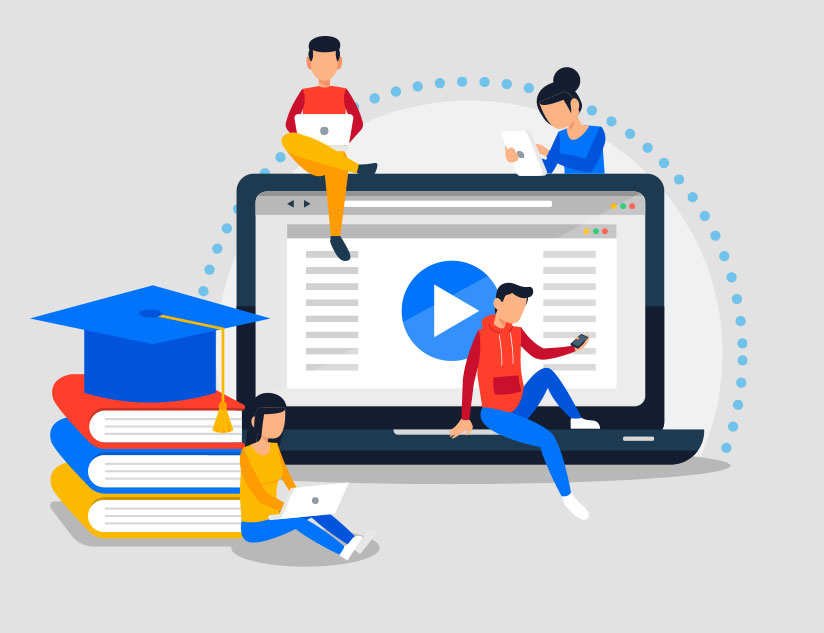There are certain periods that define or change the course of an industry and even the world at large. The agriculture sector underwent such a revolution in the 18th century, when scientific methods, such as selective breeding, were introduced. The Industrial Revolution changed the world forever with the beginning of the automotive industry and Henry Ford introducing the remarkable Model T.
Today, we are witnessing another revolution – that of the education sector. There have been great advancements in technology, providing tools that can enhance the experience for both educators and students. It is educational technology that has made microlearning content and videos amazing aids to learning.
Microlearning vs eLearning
With the use of technology, K-12 education is being made cheaper, more fun and convenient. The two terms at the forefront of this education movement are “microlearning” and “e-learning.” E-learning stands for “electronic” learning. In this model, education is delivered via digital means, with the help of technologies such as eBooks, videos, digital games, and simulations.
In the case of microlearning, information is broken down into small, bite-sized pieces. This improves the learning process, as the brain prefers to consume small pieces of information instead of huge chunks. Small nuggets of information, in the form of microlearning, make it easier to understand and retain new information. For instance, take this interactive piece by MagicBox™. Microlearning can be provided efficiently with the use of an e-learning platform.
Importance of Online Videos in Education
There are various means by which online learning and microlearning can be delivered in the K-12 environment. And, one of the most important mediums is videos. In fact, James Franklin, the Communications Manager for Gresham College, says that video is a key part of Gresham’s approach to education in the 21st century.

Videos are an extremely efficient form of teaching. Some of the ways in which videos help the learning process:
- Improves Student Engagement
Videos have proven to be much more impactful than text alone. It offers a multisensory experience, with visuals and audio, which is more engaging. This also makes the understanding of complex information easier for the student.
- Saves Money
Although some might think the contrary, using videos for learning can help you save money. With time, videos can replace expensive print textbooks and reduce the need for face to face time with the teacher.
- Increases Flexibility
Students can learn from videos whenever and wherever they want to. Learning need not be limited to any particular space or time with online videos.
- Allows Revisiting of Content
Also, students can go back and see the videos as many times as they need to, either to better understand a concept or to revise and commit it to memory.
How Digital Microlearning and Videos Can Work in the Classroom
The reality is that the attention span of an average reader has declined to about 8 seconds in the 21st century, which is worse than the attention span of a goldfish! Attention span is even shorter for Gen Z, who likes to move scroll through Instagram at lightning speeds. This creates a great need for small, easily consumable content in K-12 education. Microcontent can be delivered in classrooms in a variety of forms, such as:
- Infographics
- Video clips
- Shortlists
- Tables, graphs, or charts
- Images and illustrations
These tools help in presenting the content in a more attractive and compelling manner while improving engagement. Some of the things to keep in mind when implementing microlearning in classrooms are:
- Clear Objective
The lesson should be focused on one particular topic. It is best to avoid stuffing information that is worth 30 minutes in a 5-minute lesson.
- Interactive
Try to incorporate interactive and gaming elements in the videos. These keep the students engaged and motivated.
- Don’t Overwhelm
Give the students some space in between these bite-sized nuggets of information. This gives them some time to assimilate the information and maintain their interest in the lesson.
When it comes to incorporating videos in microlearning, the most important thing is to keep them short. For instance, a good idea is to make snippets that are a couple of minutes long or less.
Benefits of Microlearning Videos for Students
Microlearning content, especially in the form of videos, offers multiple benefits, such as:
1. Better Retention
You might be surprised to know that an average student remembers only 35% of what they have learned in the classroom just one week later. But with microlearning videos, recalling and retaining information becomes much easier.
2. Freedom to Set Learning Pace
With microlearning videos, students can dictate the pace at which they want to learn. Students can watch or study the content as many times as they want.
3. Mobile Learning
Online videos can be accessed from anywhere, as long as you have a supporting device Students can study in class, at home, or on the go.
Microlearning videos are the next step in making K-12 education engaging. Are you ready to become part of the education revolution, making academics more relevant, personalized and suited for the current and future generations of students? Contact MagicBox to learn how you can do so.













